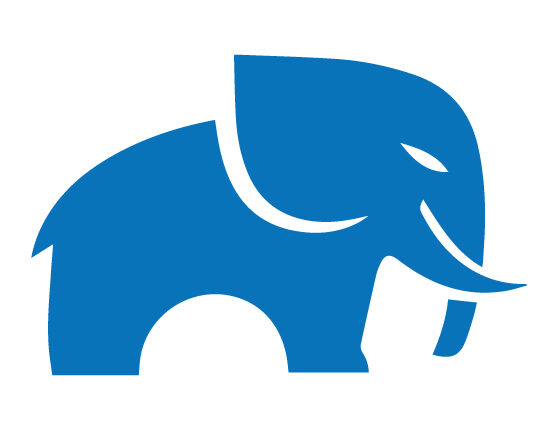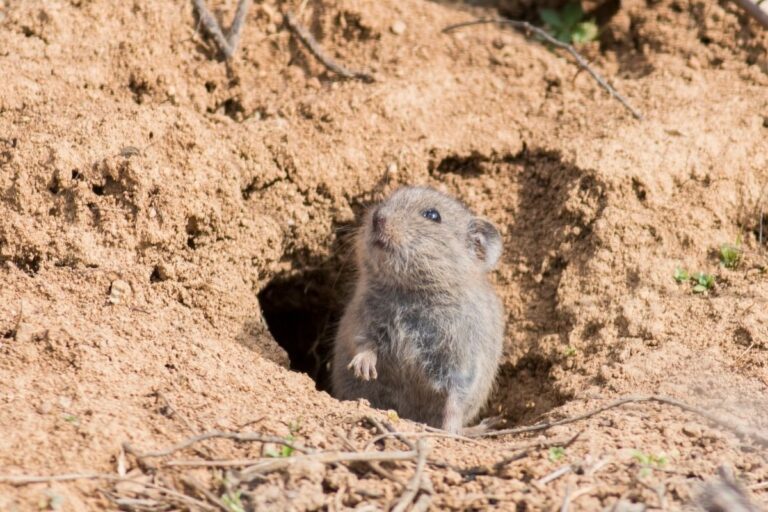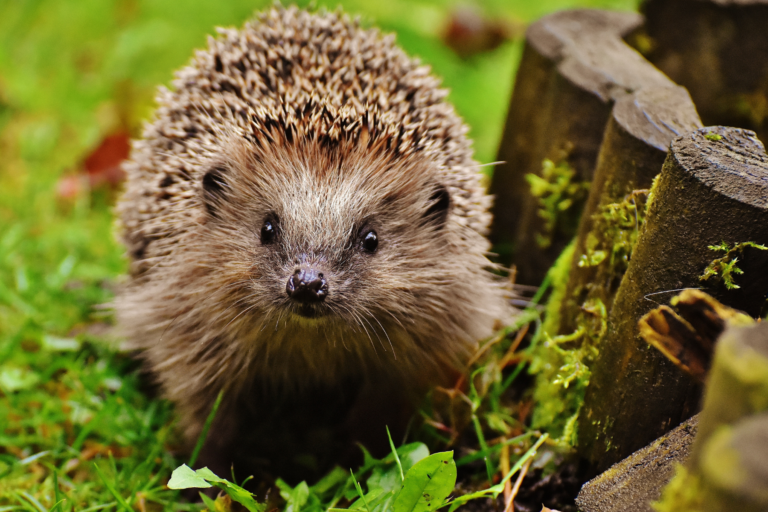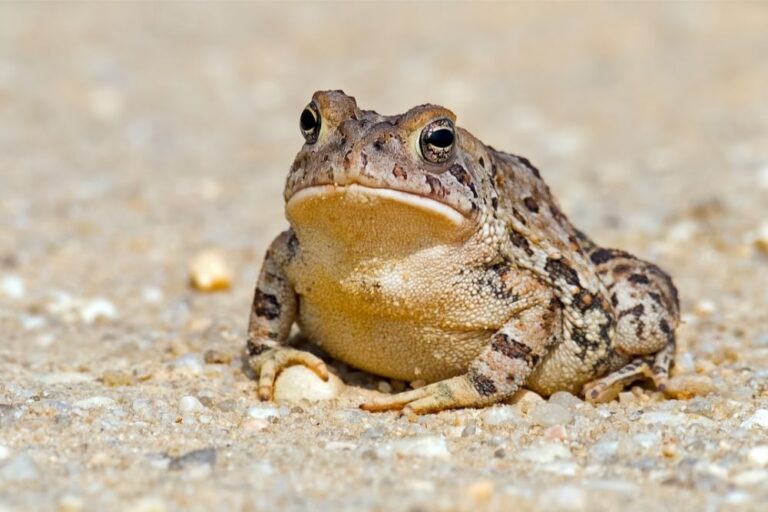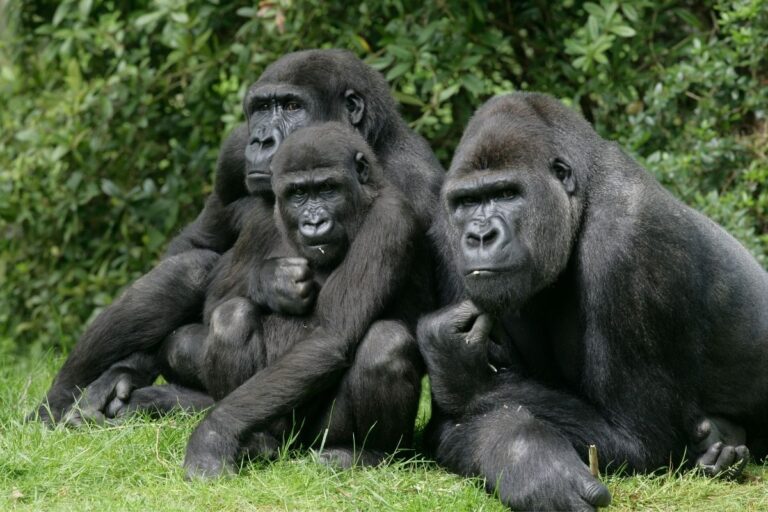Interesting Animal Facts About Cheetahs
Last Updated on November 10, 2021 by
Known as the fastest land animal, cheetahs are one of the most fascinating big cats in the world. These wild cats are native to Africa and Iran, found predominantly in Saharan mountain ranges, the savannahs in the Serengeti, and hilly Iranian terrains.
Aside from their natural habitat, cheetahs are often found in captivity such as zoos and rescue shelters in an attempt to preserve and improve their conservation status of “Vulnerable”.
Despite their impressive speed and unique coat pattern, little is known about the elusive cheetah. While people will often assume that cheetahs are related to other big cats like lions and tigers, they are in fact a species in their own right.
As a result of this, people often don’t know enough about these speedy cats.
If you’re looking for some of the most unique and lesser-known facts about cheetahs, you’ve come to the right place! We are passionate about educating people on animals, which is why we have compiled a list of the most interesting animal facts about cheetahs.
Top 10 Interesting Facts About Cheetahs
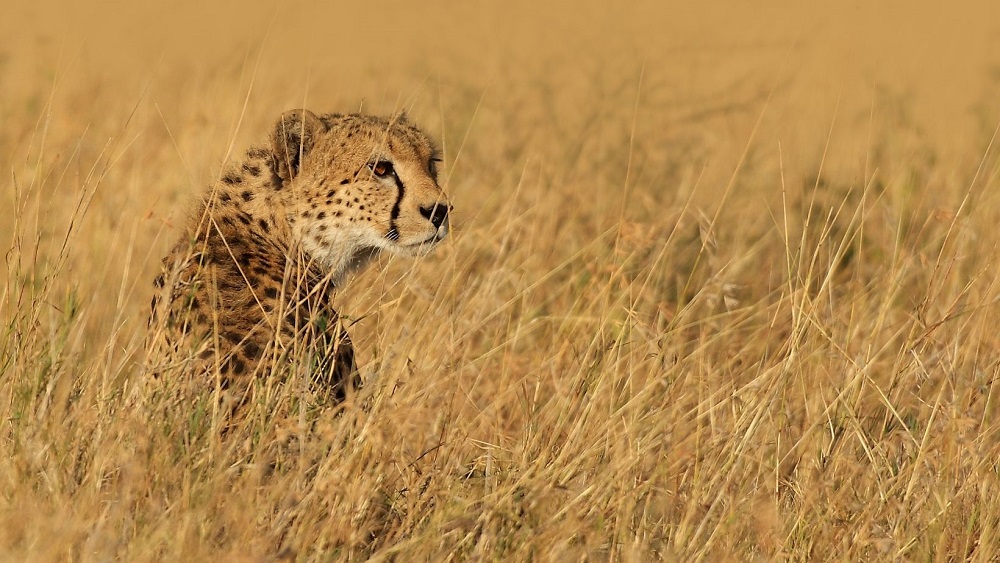
The Fastest Land Animal In The World
Cheetahs have been given the title of the “fastest land animal in the world” for decades. With the ability to reach speeds of 50-80 mph (80-128 km/h), cheetahs are certainly the last animal you’d like to outrun. Their impressive speed is due to their long, slim bodies, elongated legs, and lengthy tail.
Cheetahs Have A Lack Of Stamina
As a result of their impressive bursts of speed, cheetahs generally have a lack of stamina. They will only run at their top speeds for around 200-300 meters, which lasts only up to a minute. This is because they use all of their energy in their speed.
They Are A Vulnerable Species
Due to threats of habitat loss, fragmented distributions, and farmers who wish to protect their farmland, cheetahs have a conservation status of “Vulnerable”. It is sadly estimated that only around 7,000 cheetahs are left in the wild.
They Have An Interesting Name
The word “cheetah” derives from Hindustani Urdu and Hindi languages, which itself derived from the classical South Asian language Sanskrit. The word itself means “painted” or “variegated”, which is in reference to the cheetah’s unique coat pattern.
There Are Several Subspecies
There are four recognized cheetah subspecies – the Northwest African cheetah, the Northeast African cheetah, the Southeast African cheetah, and the Asiatic cheetah.
They Have A Fairly Long Lifespan
The average lifespan of a cheetah in the wild is 12 years, but some cheetahs are known to live up to 17 or even 20 years! In captivity, cheetahs are likely to live far longer than in the wild.
They Have A Unique Coat
Cheetahs are known for their unique coat, sporting a tan base color with sporadic black spots. The tan color is ideal for camouflaging the cat behind tall grasses. Each black spotted pattern is unique to each cheetah, so no two cheetahs will ever look the same.
They Have A Range Of Prey
Cheetahs are impressively strong animals who have the ability to bring down large prey, including zebras, impalas, hares, Thompson’s gazelles, and even wildebeest if they are lucky.
The only reason why prey might escape the clutches of a cheetah is if the prey has enough stamina and maneuverability to outrun a cheetah.
Cheetah Cubs Are Independent
Mother cheetahs teach their cubs how to hunt from a young age. When the cubs are old enough, the mom will stop bringing down prey for her kids. Instead, she will catch prey without killing it, allowing enough time for her cubs to start running after the prey to catch it.
The mom will stay close to trip up the prey to allow her cubs to catch up.
They Are Diurnal Animals
Cheetahs are diurnal animals, which means they are only active during the day and they take each day as it comes. This means that when they have a successful hunt, the cheetahs make sure to eat the whole animal to prevent predators like vultures and hyenas from stealing the carrion.
This is also because cheetahs get most of their water intake from prey.
Unusual Facts About Cheetahs
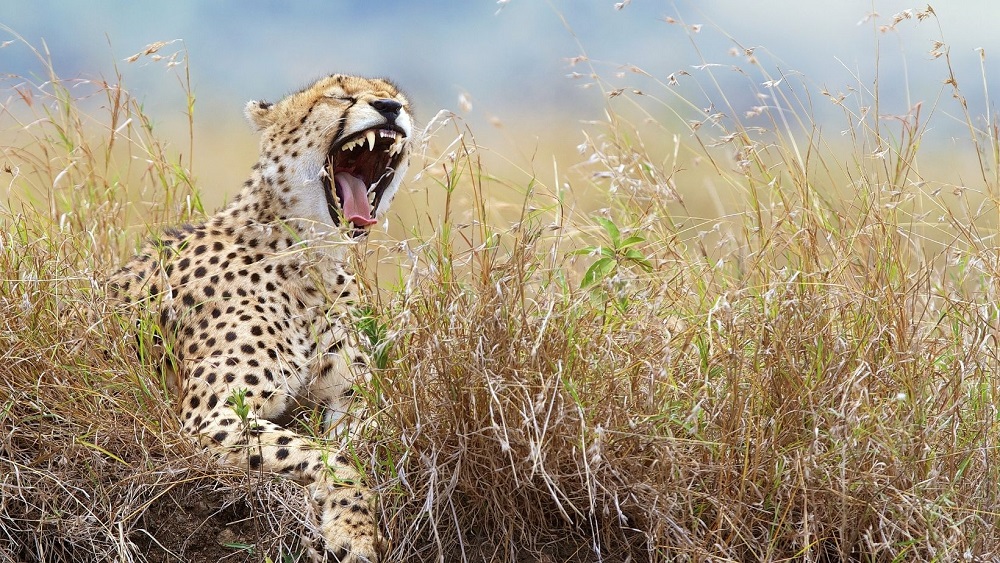
Cheetahs Were Important In Ancient Egypt
Cheetah artifacts and etchings were found on Tutankhamen’s tomb dating back to 1400 BC. As a result of this, it is believed that cheetahs were considered sacred animals in Ancient Egypt.
They Were Known As Hunting Leopards
Cheetahs were trained as hunting animals dating as far back as 3000 BC in ancient Mesopotamia. They were known as “hunting leopards” before their name was established, as it was soon discovered that cheetahs and leopards are separate species.
Cheetahs Are Old
Carbon dating has revealed that fossils of the Giant cheetah (a subspecies) date back to 1-2 million years ago.
Cheetahs Don’t Have A Mating Season
Unlike most wild animals, cheetahs don’t have a mating season. They will happily mate and breed at any time during the year. In most cases, however, cheetahs prefer to mate in the dry season for their cubs to be born in the wet season.
This is most likely to provide more access to water for their little ones.
Fun Facts About Cheetahs
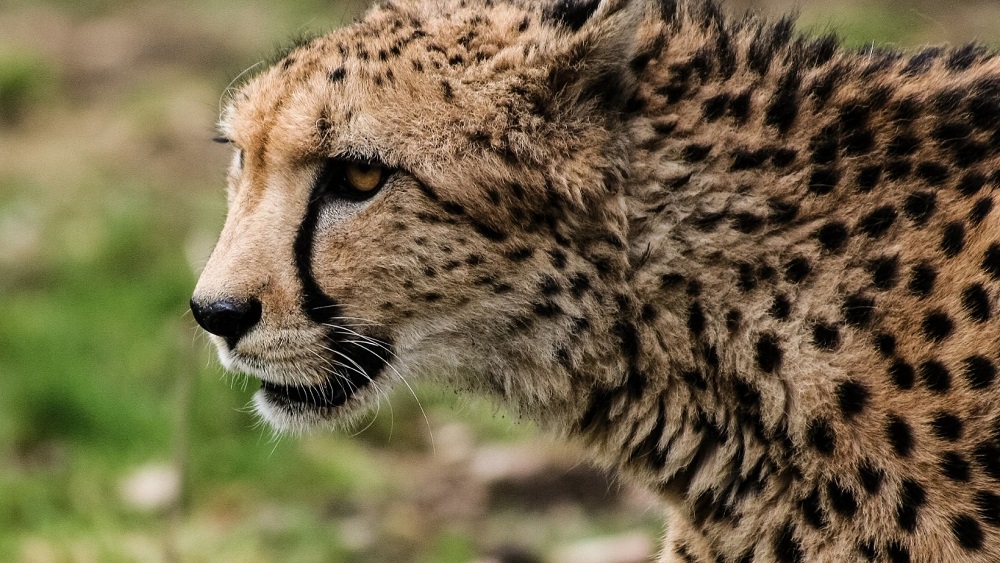
Cheetahs Can’t Roar
Unlike lions and tigers, cheetahs can’t roar! This is because cheetahs only have a one-piece hyoid bone rather than a two-piece hyoid bone, which is responsible for roaring. As a result of this, cheetahs will purr, chirp, and churr.
They Are Highly Maneuverable
Cheetahs can do the one thing that other big cats can’t – they have the ability to turn in a different direction mid-air and mid-sprint. This unique ability is due to the cheetah’s long tail, which helps to steer the animal.
They Are Highly Territorial
Male cheetahs are highly territorial, and will mark their territory in the same way as domestic cats – by urinating around their area. Females will also do this, particularly if they are looking for a mate.
They Have Tear Stain Marks
One of the most distinguishing features of a cheetah is the tear stain marks running down from their eyes. These marks are an adaptation to prevent glare from the sun, helping the cheetahs to keep their eye on prey.
However, according to Zulu legend, the marks are a result of a wicked hunter who stole a cheetah for his own hunting gain, resulting in the cheetah crying herself to sleep. This tale is a reminder to hunters to only hunt for their traditional culture, and not for selfish reasons.
They Have Non-Retractable Claws
Unlike domestic cats (and like domestic dogs), cheetahs have non-retractable claws, meaning their claws are permanently exposed. Not only does this help the cheetahs latch onto their prey, but the claws work as studs to provide traction when running.
Cheetah Cubs Are Hairy
Cheetah cubs are notorious for having long, fluffy hair. What people don’t know is that this long hair is there for a reason – the long hair that travels from their necks to their tails is called a mantle, which works to make the cub look like a honey badger.
Honey badgers are one of the most dangerous animals in the world, even to some of the deadliest lions, so the mantle works to repel predators.
Fun Facts About Cheetahs For Kids
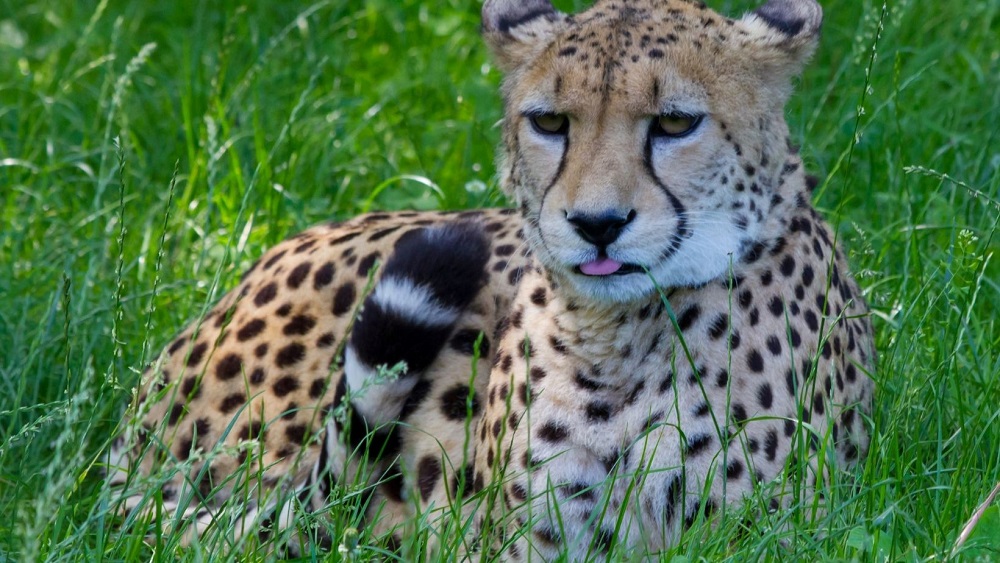
Cheetahs Are Non-Aggressive
Surprisingly, cheetahs are one of the most non-aggressive wild animals. They tend to only hunt for smaller prey because of their non-aggressive nature, and even though most cheetahs are solitary animals, they rarely fight with one another.
Of course, cheetahs are still wild animals that cannot be domesticated like cats!
They Don’t Need Water
Like camels (except for the lack of hump), cheetahs can go several days without needing water! They get most of their water intake from their prey, otherwise they can go 3-4 days before needing a drink.
Moms Move Their Cubs Regularly
Cheetah cubs never stay in one place for longer than 4 days. This is because the mom likes to find a new lair regularly to prevent a scent buildup that can lure predators like hyenas, jackals, and vultures.
Cheetah Moms Are Single Moms
Female cheetahs prefer to live alone and raise their cubs without a male partner. She will do all the hunting and protecting without any help!
Male Cheetahs Are Sociable
Male cheetahs, on the other hand, are more sociable and like to form tribes with other male cheetahs, regardless of the litter they come from. The only time they mingle with female cheetahs is during the mating times.
They Don’t Hunt At Night
So, we know cheetahs are diurnal animals who hunt during the day. This is mostly because, unlike other wild animals, cheetahs have poor night vision.
Cheetahs Communicate Through Touch
As cheetahs are fairly non-vocal animals, they will communicate with other cheetahs by touching them. These actions include sniffing, grooming, licking each other’s faces and ears, and rubbing their cheeks together. This is their way of socializing with one another!
